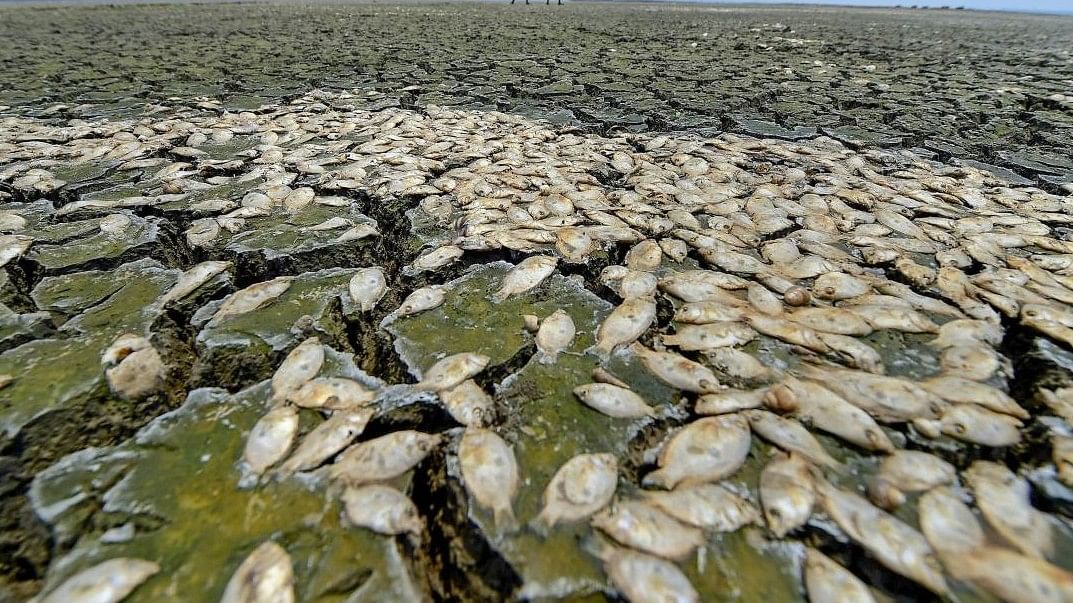
Dead fishes lying on the parched bed of the Chembarambakkam reservoir, in Chennai
Credit: PTI Photo
According to the latest data released by the Central Water Commission (CWC), the overall water storage in major reservoirs and river basins across India has dipped significantly below the average recorded over the past decade. As of April 18, 2024, the CWC's weekly update paints a troubling picture, indicating that except for central and eastern India, all other regions—northern, western, and southern—are witnessing water levels lower than the ten-year average for the corresponding period.
The report highlights a stark decrease in live storage, with only 31 percent of the total live storage capacity of 150 monitored reservoirs, amounting to 56.085 billion cubic meters (BCM). This figure is notably lower than the 33 percent recorded last week and a considerable drop from 67.57 BCM during the same period last year.
Southern states such as Karnataka, Kerala, Andhra Pradesh, and Tamil Nadu are particularly vulnerable, collectively accounting for a mere 9.31 BCM of live storage, nearly half of last year's levels. Similarly, the situation in western states like Maharashtra and Gujarat and northern states like Punjab, Himachal Pradesh, and Rajasthan reflects significant declines in live storage compared to previous years.
Eastern states, including Assam, Odisha, West Bengal, and Bihar, also grapple with diminished water storage, although the shortfall is less severe than in other regions. Meanwhile, reservoirs in central India, encompassing Uttar Pradesh, Madhya Pradesh, Chhattisgarh, and Uttarakhand, exhibit a decline from last year but remain slightly above the ten-year average.
The critical levels are most pronounced in river basins across the southern and eastern regions, where many rivers are experiencing unprecedented deficits. River basins such as Pennar and east-flowing rivers between Mahanadi and Pennar have seen water storage drop to alarming levels, with some rivers registering 100 percent deficiency compared to the ten-year average.
River basins and reservoirs serve as sources of water for irrigation, fulfilling annual requirements for drinking water, and facilitating the operation of hydroelectric power projects.
The primary cause of this alarming decline in water storage is attributed to rainfall deficits across various sub-divisions, as reported by the India Meteorological Department. Several regions, including Andaman and Nicobar Islands, Konkan, and Goa, have recorded substantial rainfall deficits since March, exacerbating the water scarcity crisis.
With numerous reservoirs nearing depletion and states like Karnataka, Andhra Pradesh, and Telangana already grappling with water shortages, urgent measures are imperative to address this pressing issue.